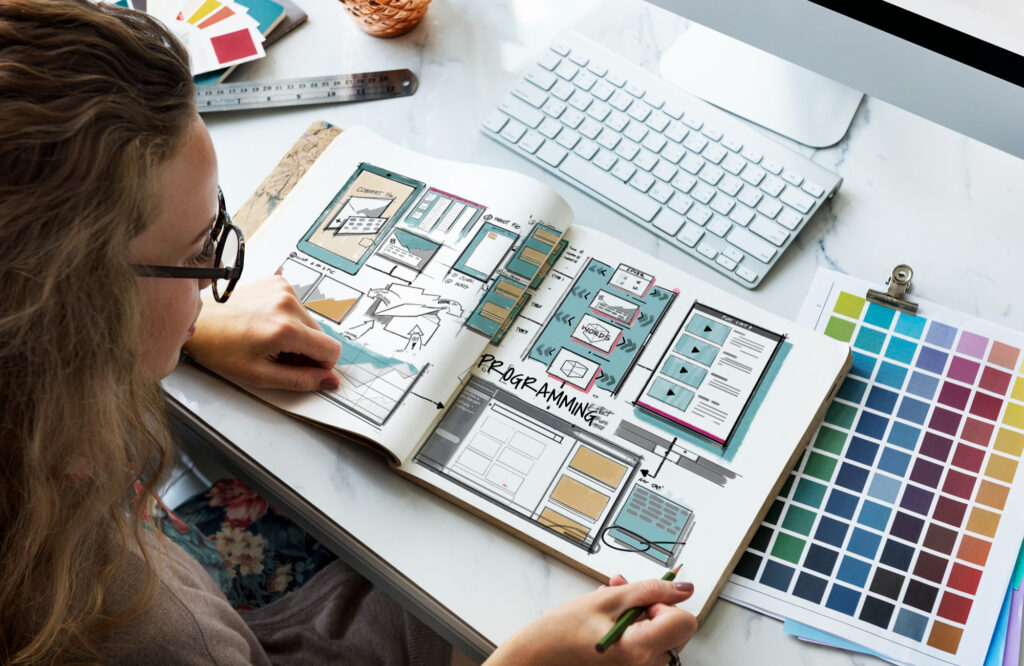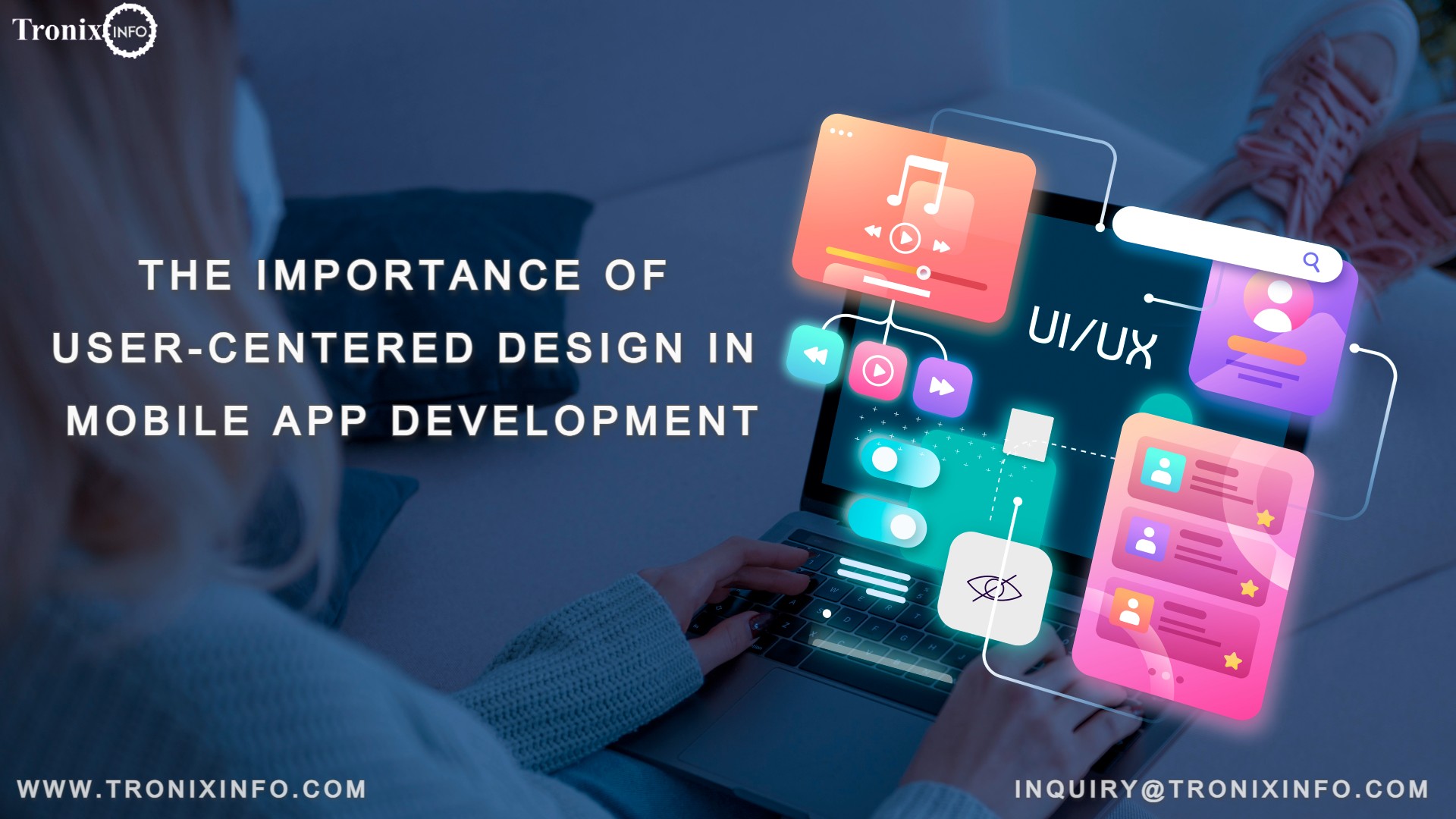Mobile apps have become an essential part of our daily lives. They have revolutionized the way we access information, communicate, and perform various tasks. However, not all mobile apps are created equal, and some apps offer better user experiences than others. One of the key factors that determine the success of a mobile app is user-centered design.
User centered design (UCD) is an approach that prioritizes the needs and experiences of users in the design process. By designing apps that cater to the diverse needs of users, developers can create applications that are easy to use, intuitive, and enjoyable to navigate.
We will explore the importance of UCD in mobile app development and its impact on the success of mobile apps.
What is User Centered Design?
User-centered design is an approach to design that prioritizes the needs and experiences of users. It focuses on creating products and services that meet the users’ needs, goals, and preferences. UCD involves a collaborative process that integrates user research, design, and testing to develop products that are optimized for user experience.

Why is UCD Important in Mobile App Development?
UCD is crucial in mobile app development because it helps to create apps that are user-friendly, intuitive, and enjoyable to use. Mobile apps that are designed with UCD in mind are more likely to be adopted, used, and engaged with by users. Some key benefits of UCD in mobile app development are:
1. Increased User Adoption
Mobile apps that are designed with users in mind are more likely to be adopted and used. By creating apps that meet users’ needs and expectations, developers can increase user engagement and loyalty. The more users engage with an app, the more valuable the app becomes.
2. Better Usability
User-centered design helps to ensure that the app is easy to understand, navigate, and use. This can reduce frustration and improve the overall user experience. Apps that are intuitive and easy to use are more likely to be enjoyed by users.
3. Improved Success
In a world dominated by mobile apps, companies that invest in UCD have a competitive advantage over those that don’t. By focusing on user needs and experiences, developers can create apps that meet their users’ goals and expectations, leading to greater success for the app. UCD helps to create apps that are more likely to achieve their goals, whether it’s to increase user engagement, drive sales, or improve productivity.
4. Competitive Advantage
In a world dominated by mobile apps, companies that invest in UCD have a competitive advantage over those that don’t. In a highly competitive market, it’s essential to differentiate your app from others by focusing on user needs and experiences. By investing in UCD, developers can create apps that stand out from the competition, attract more users, and generate higher revenues.
The success of a mobile app depends not only on its features but also on the user experience it provides. This is where user-centered design (UCD) plays a crucial role. We will explore the significance of user-centered design in mobile app development and why it should be a top priority for app developers.
1. Enhanced User Experience:
The user-centered design focuses on understanding the needs, behaviors, and preferences of the target users. By conducting user research, app developers gain valuable insights into user expectations and pain points. This knowledge enables them to create intuitive and user-friendly interfaces, resulting in an enhanced user experience.
A well-designed user interface (UI) ensures that the app is visually appealing, with clear navigation, intuitive controls, and organized content. By placing the user at the center of the design process, developers can create seamless interactions that align with user expectations. This, in turn, leads to increased user satisfaction, as users find it easy to navigate through the app and accomplish their goals efficiently.
2. Increased App Adoption and Retention:
When an app is designed with the end-user in mind, it becomes more appealing and relevant to the target audience. User-centered design ensures that the app meets the specific requirements of the users, aligning with their goals and motivations. By addressing their pain points and providing solutions, the app becomes a valuable tool that users are more inclined to adopt and retain.
User-centered design helps in creating an emotional connection between the users and the app. When users feel that an app understands their needs and provides a solution tailored to them, they are more likely to develop a sense of loyalty towards the app. This leads to increased app adoption and reduces the chances of users abandoning the app after initial installation.
Moreover, satisfied users are more likely to recommend the app to others, thereby expanding the user base and contributing to its long-term success.
3. Minimized User Errors:
User-centered design aims to reduce the occurrence of user errors and confusion while interacting with the app. By incorporating usability testing and iterative design processes, developers can identify and address potential usability issues early in the development cycle. This proactive approach helps in creating error-free interfaces, minimizing frustration and confusion for the users.
Usability testing involves observing users as they interact with the app and gathering feedback on their experience. This valuable feedback helps developers identify any areas where users struggle or encounter difficulties. By making iterative improvements based on user feedback, developers can refine the app’s interface, interactions, and workflows, ensuring that users can accomplish their tasks without encountering obstacles.
When users can effortlessly navigate and interact with an app, they feel more confident and satisfied, leading to a positive overall experience and increased engagement.
4. Improved Efficiency and Productivity:
An app that is designed around the needs of its users can significantly enhance efficiency and productivity. User-centered design focuses on streamlining workflows and simplifying complex processes. By understanding user tasks and goals, developers can optimize the app’s features and functionalities to enable users to accomplish their objectives quickly and effortlessly.
User-centered design involves mapping out user journeys and identifying potential pain points or bottlenecks. By leveraging this understanding, developers can make informed decisions about how to present information, structure the interface, and design interactions to minimize cognitive load and maximize efficiency.
When users can easily navigate through an app and find the desired features, they can complete tasks in a shorter time span. This not only improves their productivity but also contributes to a positive user experience, as they perceive the app as a valuable tool that helps them achieve their goals efficiently.
5. Competitive Advantage:
In the coming days highly competitive app market, offering an exceptional user experience is key to gaining a competitive edge. The user-centered design allows app developers to differentiate their products from the competition by creating a unique and tailored experience.
A well-designed app that focuses on user needs stands a higher chance of standing out in the crowded app market. By consistently delivering an exceptional user experience, developers can attract a larger user base and retain existing users, creating a sustainable advantage over competitors.
User-centered design is an essential aspect of mobile app development that cannot be ignored. By understanding the needs, behaviors, and preferences of the target users, app developers can create apps that offer an exceptional user experience. Enhanced user experience leads to increased app adoption, higher user engagement, and improved productivity.

